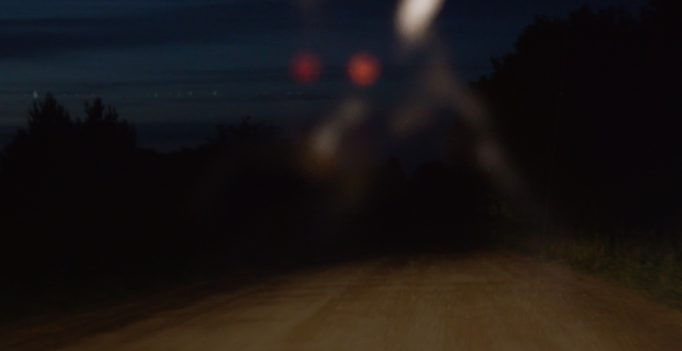In rural Michigan, dozens of individuals have reported sightings of a terrifying bipedal creature stalking forests and country roads at night. Standing six-to-seven feet tall, with fearsome glowing eyes and a head resembling a canine, the Michigan werewolf (or “dogman”) is a well-documented urban legend. Startlingly similar is the so-called “Beast of Bray Road” sighted in the neighbouring state of Wisconsin. Like the Michigan dogman, the beast stands upright on two legs and has the head of a dog or wolf. Those who claim to have seen these creatures report experiences of intense fear. Some claim they were pursued, or even attacked, by the beast.
Following on the heels of 2019’s On the Trail of Bigfoot and 2020’s The Mothman Legacy, documentarian Seth Breedlove’s latest exploration of small town American creepy crawlies is a lackluster and underdeveloped examination of what is an otherwise promising subject.
Consisting entirely of interviews with eyewitnesses who claim to have encountered the monster(s) firsthand, American Werewolves is more a collection of stories than a serious investigative effort. Some of the witnesses come across more credible than others, but none are placed within a broader context or supported by evidence.
The images of werewolves and dark rural settings that accompany the stories are repetitive. As a whole, the film works best when taken as a kind of anthropological project — a collection of personal stories recorded and preserved before they are lost. All the witnesses are from Michigan and Wisconsin and, while their stories are not dated, all seem to have occurred in the late 1970s through to the 1990s.
Considering the long history of the dogman/Beast of Bray Road phenomenon (the earliest dogman stories date back to the 1880s), there is a lot of potential here. Not only are there a plethora of first-person accounts, but there is also a range of theories and possible explanations. While some claim that they have seen a real, physical creature, others are convinced that what they have experienced is paranormal.
Most of the stories had me muttering “sounds like a pissed-off bear” under my breath. Still, I love a creepy yarn and would have written this film off as a bit of harmless fun, except for the repeated, cringe-worthy references to Indigenous burial grounds.
As a white settler, I don’t feel it is my place to offer a detailed analysis or commentary on this aspect of the film. However, Shea Vassar at Film School Rejects has written an excellent overview of the trope and its problematic implications here. It is worth nothing that no observable effort was made to include Indigenous perspectives, research the validity of these claims, or consult with communities.
A more interesting film would have taken a deeper look at this urban legend and the myriad of perspectives and potential explanations. Unfortunately, American Werewolves barely scratches the surface and leaves some of its witnesses more questionable claims unchecked, unchallenged, and unsubstantiated.
American Werewolves is a bit like sitting around the campfire with your drunk uncle and his buddies while they recount vaguely scary hunting stories. Not entirely unenjoyable, but neither credible nor convincing. If you’re not already on board with werewolves and bigfoot, American Werewolves isn’t going to make you a believer. However, fans of Breedlove’s previous work will probably find something to love.
**********
Do You Tweet? Follow These Tweeple:
Shannon Page: @ShannonEvePage



Be the first to comment